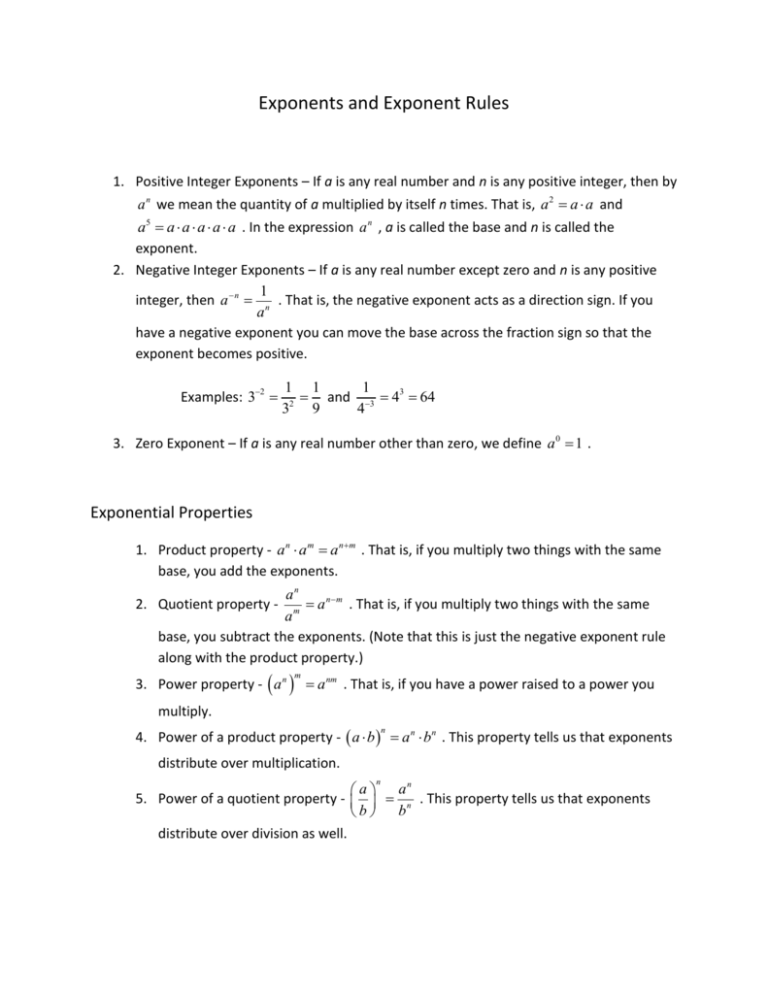Exponents and Exponent Rules ( )n
advertisement

Exponents and Exponent Rules 1. Positive Integer Exponents – If a is any real number and n is any positive integer, then by a n we mean the quantity of a multiplied by itself n times. That is, a 2 a a and a5 a a a a a . In the expression a n , a is called the base and n is called the exponent. 2. Negative Integer Exponents – If a is any real number except zero and n is any positive 1 integer, then a n n . That is, the negative exponent acts as a direction sign. If you a have a negative exponent you can move the base across the fraction sign so that the exponent becomes positive. Examples: 32 1 1 1 and 3 43 64 2 3 9 4 3. Zero Exponent – If a is any real number other than zero, we define a 0 1 . Exponential Properties 1. Product property - a n a m a nm . That is, if you multiply two things with the same base, you add the exponents. an a n m . That is, if you multiply two things with the same am base, you subtract the exponents. (Note that this is just the negative exponent rule along with the product property.) 2. Quotient property - 3. Power property - a n a nm . That is, if you have a power raised to a power you m multiply. 4. Power of a product property - a b a n bn . This property tells us that exponents n distribute over multiplication. n an a 5. Power of a quotient property - n . This property tells us that exponents b b distribute over division as well. One way to keep the rules in mind is to think of the order of operations. The rules of exponents step down one level on the order of operations as shown: An exponent raised to an exponent steps down one level to multiplication of exponents; multiplying two terms with the same base steps down to adding exponents; dividing two terms with the same base steps down to subtracting exponents. Notice that if you add two terms with the same base there is no lower level on the order of operations. Therefore, there is no rule for a n a m or for a n a m . Practice Problems: Simplify each expression completely. Write your answers with positive exponents. x3 x 2 1. 23 22 2. x3 x 4 3. 43 4. 2 4 32 5. 4 3 6. x3 7. 2 x 8. 3x 2 4 10. 3 2 9. 2y 2 x 11. y 2 3 4 12. 2 x 2 y 3 3xy 4 1 Practice Problem Solutions 1. 25 32 2. x 1 4. 4 5. 7. 22 x 4x 8. 9x 2 16 9 11. 10. 1 9 1 x 3. x 5 6. x 6 9. 16 y 4 x3 y3 12. 4 x3 y10 3






